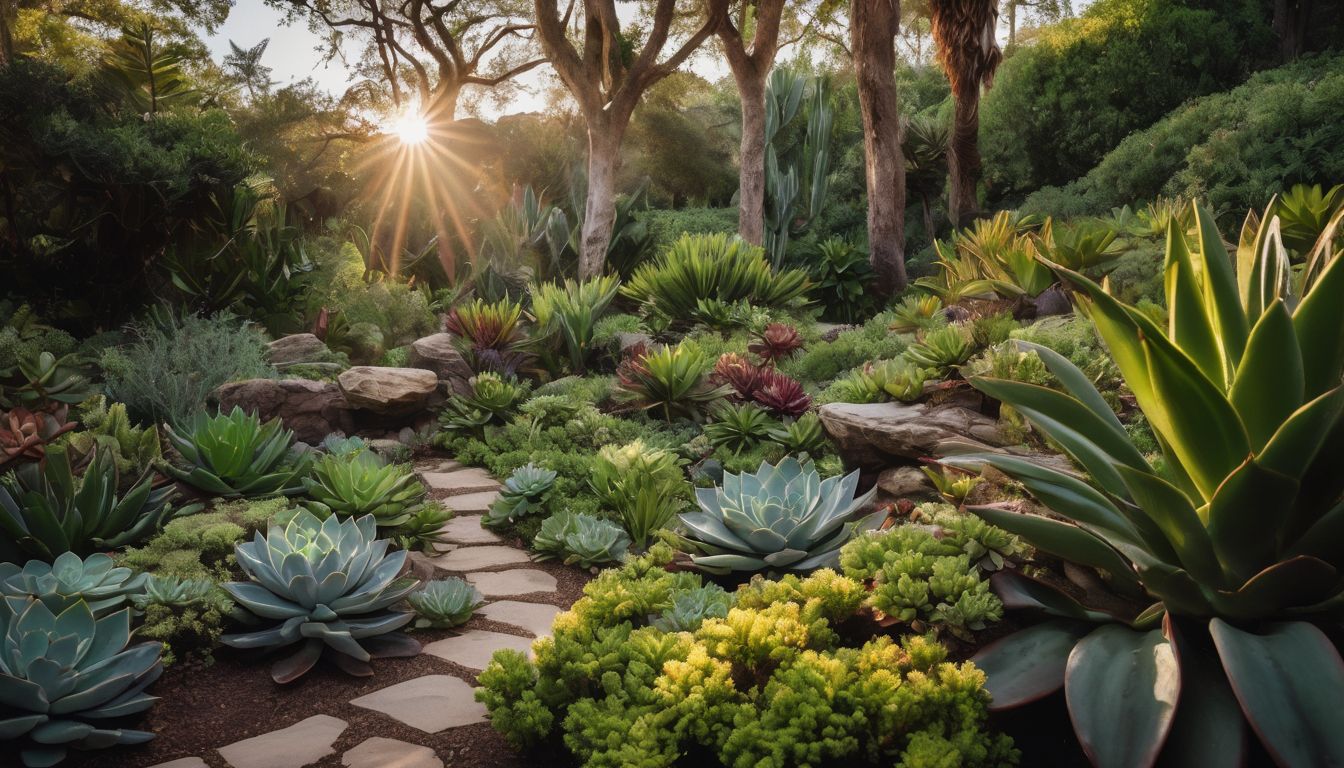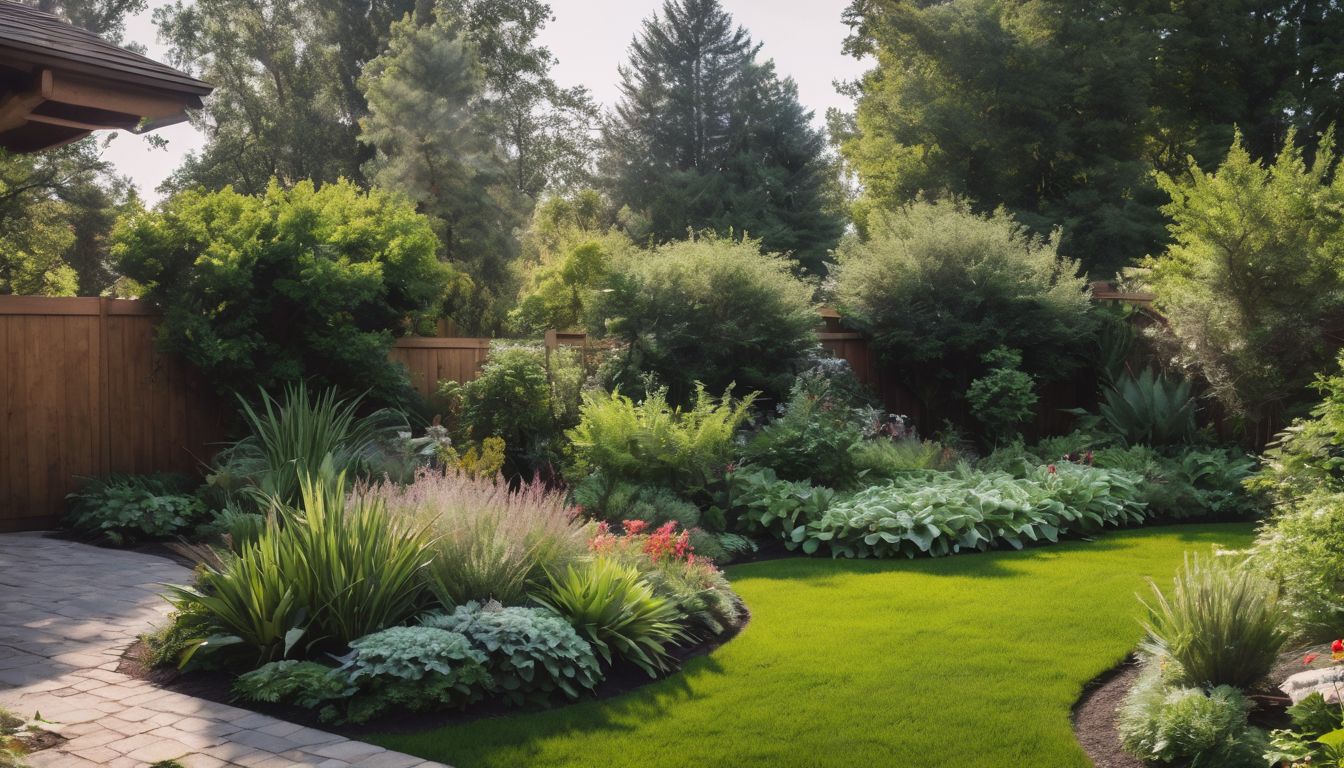For whatever reason, lawns have long been a staple of American suburban life. Lawns cover about 40.5 million acres of the country. We spend about $30 billion maintaining lawns every year. 30-60% of residential water bills are because of our lawns. We use 3 million tons of fertilizer and over 30 thousand tons of synthetic pesticides each year.1 On the other hand, by making just a few changes, you can make your lawn an eco-friendly one.
Benefits for the environment: We use plenty of unnecessarily wasteful and inefficient methods to maintain our lawns. By making just a few changes, our lawns can use less water, less energy, and create less pollution. Lawns can actually give back to the environment by helping prevent soil erosion, filtering pollution from rainwater, and absorbing pollution from the air.2
Benefits for your health: Maintaining your lawn in an eco-friendly way reduces water usage, air pollution and noise pollution, both of which can stress you out. Some of the ways you can maintain it can also be great exercise. Plus, having a healthy lawn might encourage you to start actually getting outdoors and using your lawn.
Benefits for your wallet: Saving on your fertilizer, pesticides, water, and energy-intensive equipment maintaining your lawn can really add up.
Cost: Low to Medium Most of the methods that make your lawn eco-friendly actually reduce the cost of maintaining your lawn, since it’s all about using less: less water, less fertilizer, less pesticides, and less expensive equipment.
Time and Effort:
Medium Reducing your lawn’s energy consumption can mean a bit of physical exercise, such as raking, pushing the lawn mower, and weeding.
Conserve water: Most lawns are over-watered.3 Not only does this use up a valuable and finite resource, it contributes to fertilizer runoff. This is when fertilizer from lawns spills over into the storm sewers, which pollutes the ocean.4 Here are some ways to reduce the amount of water you use overall:
● Look for signs of over-watering: There are plenty of easy visual signs that your lawns are over-watered. Check for runoff after your lawn gets watered. Look for a pale green or yellow tint to the lawn. Moss or mushrooms growing around the area are a sign, as they can only grow in excessive moisture. If you see any of these signs, be sure to cut down on the amount or frequency that you water your lawn.
● Water infrequently: Not only does this reduce your water usage, but it’s actually healthier for your grass. When you don’t water your grass as often, the roots are forced to go deep into the soil, while relatively short weeds and weedlings with short roots run out of water. Another problem with watering too often is that it may cause a buildup of thatch,5 or a dense layer of living and dead stems and roots that build up faster than they break down.6 Thatch can prevent your grass from getting enough water and air. The best time to water the grass is whenever it starts to curl. But be sure not to wait too long after that, since grass will start to curl right before it turns brown.7
● Water early in the day: During the day, a lot of the water evaporates before it hits the ground. Wind can divert the sprinkler’s spray away from the grass. It’s best to water the lawn between 4 AM and 9 AM, when the air is cool and the wind is calmest. Also, consider getting a rain sensor, which automatically turns off your sprinklers when it’s raining, to prevent wasting water.8
Reduce energy: Maintaining your lawn can pollute the air and increase your carbon footprint. Choose eco-friendly options that are easier on the environment and on your budget.
● Reel lawnmowers: According to the EPA, gas-powered mowers are responsible for 5% of the air pollution across the country. Do the country a favor and choose reel lawnmowers. Even electric mowers still leave a large carbon footprint.9 The most eco-friendly way to mow your lawn to use a reel lawnmower, which costs significant less, and is still relatively easy to use.
● Use rakes and brooms: Gas-powered and electric leaf blowers create air pollution by stirring up particles from the ground. Plus, the loud noise and vibration can actually cause hearing loss.10 Instead of using noisy and polluting leaf blowers, use good old-fashioned rakes and brooms.
Maintain your lawn: Keeping your lawn maintained in a healthy way means that they require less resource inputs to look just as good as other lawns.11
● Mow up to three inches high: A common mistake many people make is to cut the grass as short as possible so they don’t have to cut the grass as often. Not only does this help your lawn have more weeds, since taller grass would have shaded out weedling,12 but this actually makes your lawn grow faster. Since your lawn needs to have grass blades to convert sunshine into energy, it will grow quickly, using up the stored sugar in the roots, making the plant weaker.13
● Aerate the soil: Aerating the soil once a year breaks through any thatch on your lawn. Aerating will help you to use less water and fertilizer, since it allows water and nutrients to get to the roots of the grass.14 To conserve energy, use a hand-powered lawn aerator. 15
● Use organic fertilizers: All grass needs nitrogen, but fertilizers with too much salt can actually worsen the quality of the soil. Good soil actually contains microbes and insects which help the grass grow, and fertilizers with a lot of chemicals can hurt them and indirectly hurt your grass. The best time to fertilize your lawn is once at the beginning of spring, and once at the beginning of fall.16
Mulch and compost: So much energy and taxpayer money is wasted transporting the yard debris to landfills, when these grass clippings can actually help your lawn grow healthier without fertilizers or pesticides. 17
● Leave the grass clippings on the yard: Contrary to popular thought, grass clippings don’t contribute to thatch, since they are still mostly water, and decompose quickly. The decomposing grass clippings actually recycle nutrients back into the soil, allowing you to use less fertilizer and less water. Plus, it’s not much effort. Just let your mower drop the clippings as it mows.18
● Compost the other yard waste: You can compost the other waste around your lawn and add it as a top dressing for your lawn. After dropping about 1/3 inch of compost on the top of the turf, be sure to rake it off the grass blades and onto the soil. Water the grass so the microbes can be washed into the soil.19 For a primer on composting, go to: How to Build a Composting Toilet
Use less pesticides: A good way to prevent pesticides from polluting the air, water, and soil is to use less or not to use any at all.
● Use non-toxic pesticides: If you have weeds and insects, consider using non-toxic pesticides. To learn how to make your own non-toxic pesticides, go to: Make Your Own NonToxic Pesticides.
● Attract birds that eat insects: Many birds are great replacements for insecticides, since they naturally eat insects that might be plaguing your lawn. Providing a birdbath, bird feeder, or birdhouse will attract all kinds of birds. For the birdfeeder, in order to attract only insect-eating birds, fill the feeder with sunflower seeds, peanut kernels, nutmeats, safflower seeds, thistle seeds, canary seeds, safflower seeds, or suet. Don’t worry that feeding the birds will prevent them from eating the insects, since most birds have to eat both seeds and insects.20
● Remove weeds by hand: A surprisingly simple way to remove weeds without pesticides is to use salt. This is because a salty environment is a harsh environment for most plant roots, and the salt binds to nutrients, making it harder for weeds to use them. Using a shovel, slice the base of the weed, leaving only a small root stub behind. Clear away some of the soil around the root stub and cover the area, including the top of the root stub, with a lot of salt. Put some soil back on, and add another layer of salt. Take out the weed from the shovel, and place the rest of the turf back on top. Be sure not to use this method too often, since too much salt will stay in the soil and eventually make the soil unusable for growing plants.22
● Mow more frequently to get rid of weeds: If your lawn has so many weeds that you can’t possibly remove them all by hand, consider just mowing more frequently. For grass, the growing point is near the soil, but for most weeds, their sensitive growing point is near the top of the plant.23
Alternatives to grass: Lawns aren’t for everyone. Here are some eco-friendly alternatives to grass:
● Install synthetic grass in high-drought areas: If your area has restrictions on water use, you may consider installing synthetic grass. After you install this, it doesn’t use any energy, water, fertilizers, or pesticides.24
● Go for native plants: Native plants, being naturally adapted to survive without human intervention, require much less maintenance than does a conventional lawn.25 This means they use less resources and save you time and money. Plus, they still provide the benefits of living plants to your local environment, such as helping prevent soil erosion, filtering pollution from rainwater, and absorbing pollution from the air.26
For more ideas on eco-friendly gardening and planting tips, check out the Greeniacs Guides:
Indoor Plants Guide to Greening Your Plant Care




